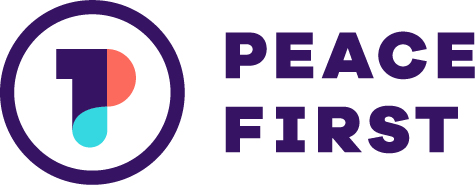Safety and Security Policy
Peace First prides itself on designing programs and tools that are responsive to the needs of young people wanting to create meaningful social change in their communities. As a non-profit organization operating across multiple regions and countries, we have a duty of care to protect our team, grantees, volunteers and community.
We believe that:
- no one, especially young people, should experience abuse, discrimination or bullying of any kind; and
- we have a responsibility to promote the safety and welfare of all young people and to implement our work in a way that protects them
We recognise that:
- the welfare of the young person is paramount;
- all young people, regardless of age, disability, gender, gender identity, gender expression, race, religion or belief, national origin, immigration status, body size, sex/sex characteristics, or sexual orientation have a right to equal protection from all types of harm or abuse;
- some young people are additionally vulnerable because of the impact of previous experiences, their level of dependency, communication needs or other issues; and
- working in partnership with young people, the organizations that support them and other agencies is essential in promoting young people’s welfare and safety.
At Peace First, our Safety & Security work includes all the ways that we seek to protect and nurture the members of the Peace First community – from young people leading projects, volunteer Ambassadors, and fellows to members of our staff team. Some dangers that our community faces are outside of our control, while others are directly linked to our work. In order to protect our community, we identify potential risks, have processes in place to mitigate them, where possible, and plan in advance what steps we can take to limit harm when something goes wrong. In particular, we think about:
- Risk of abuse posed by adults or other youth to young people participating in our programs
- Risks related to young people’s change-making work or association with Peace First
- Risks posed by external threats, both natural and man-made, that are outside of our control (conflict, natural disaster, etc.)
Some examples of how we mitigate risk:
- Adopting Safeguarding best practices and having policies and procedures in place to respond to concerns.
- Recruiting staff and volunteers safely and providing them with periodic training and effective supervision.
- Creating and maintaining a safe online environment and ensuring we have procedures to help us deal effectively with any unsafe activity.
- Creating tools and resources that help young people to assess risks in their change-making work.
- Using expert data and the local expertise of our Regional Manager, Fellows and Ambassadors (volunteers) to stay informed about different risks in different locations.
- Assessing youth-led projects individually and limiting support to some projects where the risks to the young person or their community are very high.
- Ensuring that we have effective communication means in place to report concerns and incidents.
- Limiting public access to information about young people, their stories and projects and keeping higher risk projects hidden on the platform
Our Safety and Security framework hence focuses on three pillars:
- Safeguarding: focuses on how to limit harm posed by adults or other youth to young people in our programs.
- Risks linked to change-making projects.
- Dangers our community faces resulting from natural disasters or man-made conflict, civil war, terrorist attack etc.
Report Concerns
Please report any safety concerns using our contact form HERE.

